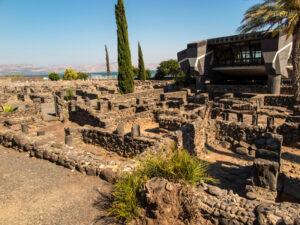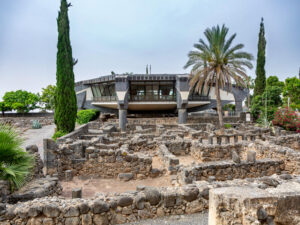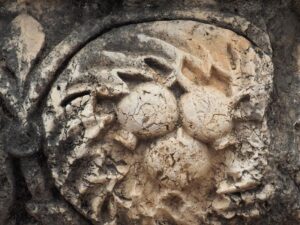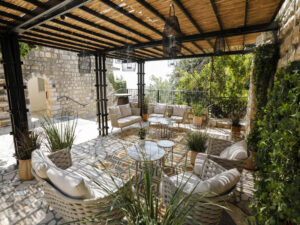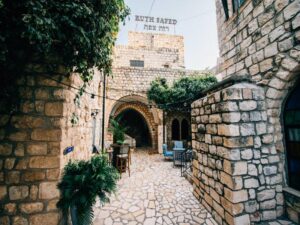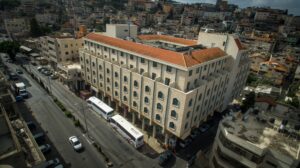Capernaum in Israel
Lee Saunders 18/03/2025
Discover the ancient village where Jesus lived, preached, and performed miracles. Walk through biblical ruins, visit the historic synagogue, and experience the spiritual essence of the Sea of Galilee.
Step into Capernaum, and you step into the heart of the New Testament and the Gospels—where Christian faith was tested, miracles unfolded, and history was made. Often referred to as the “Town of Jesus,” Capernaum is one of the most spiritually and historically significant locations in Israel. Nestled on the northern shore of the Sea of Galilee, this ancient fishing village played a crucial role in the ministry of Jesus Christ. It was here that he established his home after leaving Nazareth, gathered his first disciples, performed numerous miracles, and delivered some of his most profound teachings.
Today, the ruins of Capernaum, or Kfar Nahum in Hebrew (village of Nahum), stand as a powerful testament to its biblical past, attracting visitors from around the world who come to walk in the footsteps of Jesus and explore the remains of a once-thriving Jewish settlement. Whether you are a religious pilgrim, a history enthusiast, or a curious traveler, Capernaum offers an unforgettable experience that blends archaeology, spirituality, and breathtaking natural beauty.
Jesus’s Teachings and Archaeological Discoveries in Capernaum
The historical and religious significance of Biblical Capernaum is deeply rooted in the New Testament. According to the Gospels, Jesus left his hometown of Nazareth and made Capernaum his base of ministry. Situated along a major trade route, the village became an important location for his teachings. Several of his disciples, including Peter, Andrew, James, and John, lived and worked in Capernaum, and the town soon became known as a center of faith and miracles.
Among the many miracles recorded in the Gospels, some of the most remarkable events took place in Capernaum, Sea of Galilee. Jesus healed the servant of a Roman centurion (Luke 7:1-10), a moment that demonstrated the power of faith and amazed those who witnessed it. He also cured Peter’s mother-in-law, restored a paralyzed man lowered through a roof, and cast out an unclean spirit from a man in the synagogue, showing his divine authority.
Despite these miraculous events, Jesus later rebuked Capernaum (Matthew 11:23-24), predicting its downfall because of its lack of repentance. Over time, the town was abandoned, and its ruins remained untouched for centuries—until archaeological excavations in the 19th and 20th centuries brought its history back to life.
Top Attractions – What to See in Capernaum
Today, the remains of Capernaum offer an extraordinary glimpse into the past, with several key sites drawing visitors year after year. These are:
One of the most impressive landmarks in Capernaum is its ancient synagogue, built from white limestone, which stands out dramatically against the surrounding black basalt stones. While the current structure dates back to the fourth or fifth century, archaeologists believe it was built over the foundations of an earlier first-century synagogue—potentially the very one where Jesus taught. Walking through its tall columns and intricate carvings, visitors can imagine the gatherings of Jewish worshippers and early Christians who once listened to his teachings.
Not far from the synagogue lies what is believed to be the House of Peter (Saint Peter’s Home), one of the most sacred Christian pilgrimage sites in Capernaum. Excavations uncovered a modest first-century home that later became a Christian gathering place, suggesting that early believers worshipped there shortly after the time of Jesus. To protect and honor the site, a modern Franciscan church has been constructed on elevated pillars above the ruins. The church is uniquely designed with an octagonal shape and a glass floor, allowing visitors to look down directly onto the ancient home below.
Built in a contemporary architectural style, the Modern Franciscan Church is a Catholic church serving as a place of reflection and worship for pilgrims visiting Capernaum. Its elevated design preserves the ruins of Peter’s house, while offering visitors an opportunity to experience the spiritual energy of the site.
A short walk from the main archaeological site, the Greek Orthodox Church of the Holy Apostles stands out with its whitewashed walls and red domes. Unlike the Franciscan church, which focuses on preserving archaeological remains, this church is known for its beautifully decorated Byzantine-style frescoes that depict scenes from the life of Jesus. Positioned near the Sea of Galilee, the church also provides a serene backdrop for prayer and contemplation.
Visitor Information – Location, Entrance, and Practical Tips
Location and How to Get There
Capernaum is located in northern Israel, approximately 15 km (9 miles) from Tiberias. The most convenient way to visit is by car, following Route 90 north along the Sea of Galilee. Public buses are available, but their schedules can be infrequent, so checking ahead is recommended. Many Christian pilgrimage and history tours include Capernaum as part of a broader Galilee itinerary.
Capernaum Entrance Fee and Opening Hours
There is a small entrance fee to Capernaum National Park, which is open daily from 8:00 AM to 4:00 PM, with limited hours on Fridays and Jewish holidays. Check the Nature Parks site for more details. The Greek Orthodox Church is free to enter. The site is open Monday through Saturday daytimes but remains closed on Sundays.
Dress Code for Visitors
As Capernaum is considered a religious and historical site, visitors are expected to dress modestly. Shoulders and knees should be covered, especially when entering the churches and synagogue ruins.
FAQs – Common Questions About Visiting Capernaum
How Do I Visit Capernaum? Capernaum is easily accessible from Tiberias by car, bus, or as part of a guided tour that explores the biblical sites of the Galilee region.
What Miracles Did Jesus Perform in Capernaum? Jesus performed several miracles in Capernaum, including healing the centurion’s servant, curing Peter’s mother-in-law, healing a paralyzed man, and casting out a demon in the synagogue.
What Other Biblical Sites Are Near Capernaum? Nearby sites include Tabgha (Church of the Multiplication). Managed by the Benedictine Order, this pilgrimage site is believed to be the site where Jesus performed the miracle of feeding 5,000 people with five loaves of bread and two fish. Nearby there is also the Mount of Beatitudes, where Jesus is to have delivered the Sermon of the Mount, and Magdala, an ancient Jewish fishing village and the birthplace of Mary Magdalene. These are all within a short drive of Capernaum.
Where to Stay – Recommended Hotels Near Capernaum
Stay at Dan Hotels for a seamless blend of comfort, service, and prime locations near Israel’s most historic sites. Experience the beauty of the Galilee and explore Capernaum while enjoying world-class hospitality. Such an unrivalled experience deserves only the best.
For visitors exploring Capernaum and the Sea of Galilee, two excellent hotel options offer both comfort and proximity to biblical landmarks. Mary’s Well Nazareth Hotel, located in the historic city of Nazareth, provides easy access to Christian heritage sites and a comfortable stay. Meanwhile, Ruth Safed Hotel, set in the mystical town of Zefat (or Safed), offers a blend of artistic atmosphere and stunning views of the Galilee region. With additional refined hotels in nearby Haifa – and across Israel – Dan Hotels brings visitors the convenience and comfort to follow days of reflection.
For religious travelers, history lovers, and archaeology fans, visiting Capernaum is an extraordinary experience. Walking through the ancient ruins, standing in the synagogue where Jesus preached, and gazing out over the Sea of Galilee brings the biblical past to life. Whether drawn by faith, curiosity, or a passion for history, a visit to Capernaum is a journey back in time—one that continues to inspire and move people from all over the world.

